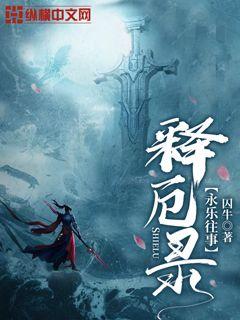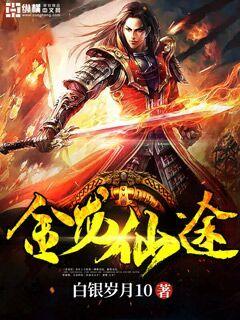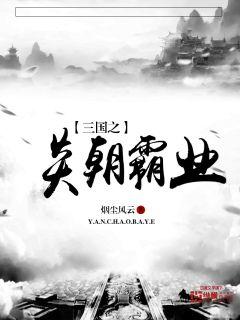
### 文章摘要
本文探讨横滨水平球员在日本足球历史上的独特地位。横滨水平作为日本足球中的重要代表,不仅在体育成就上有着显著贡献,更在文化认同和社会影响方面具有深远意义。通过分析其发展历程、球员特质、对日本足球影响以及未来展望,揭示了这支球队在日本体育史上的不可替代性和深远影响。
---
1、发展历程
横滨水平的成立与发展
俱乐部文化与价值观
历届主教练对球队影响
2、球员特质
技术和战术特点的结合
青训体系与球员培养
球员个性与团队精神
3、对日本足球影响
提升联赛水平与国际形象
文化象征与社会认同
球迷文化的形成与传承
4、未来展望
面临的挑战与机遇
发展路径与战略规划
在全球足坛的定位与影响力
总结:
横滨水平不仅在日本足球史上有着独特地位,其发展历程、球员特质、对日本足球的影响以及未来展望都彰显了其不可替代的重要性。通过深入分析,我们能更好地理解这支球队在日本体育和社会中的深远影响。
未来,随着横滨水平继续发展壮大,其在国际足坛的影响力有望进一步扩展,为日本足球的未来注入新的活力与希望。
文章摘要:马盖蒂是一位融合了篮球才华与商业头脑的传奇人物。他不仅在篮球界取得了辉煌的成就,还通过商业投资和品牌建设,成为了跨界成功的典范。本文将从他的运动生涯起步、商业投资策略、品牌建设过程和社会影响力四个方面,深入探讨马盖蒂独特的传奇经历。
1、运动生涯起步
马盖蒂从年轻时期展示出对篮球的卓越天赋。早期的训练和比赛经历为他未来的成功打下了坚实基础。在大学篮球赛场上的表现引起了广泛关注,奠定了他进入职业篮球联赛的基础。
随着他在职业生涯中的逐步成长,马盖蒂展现出了超凡的运动才华和领导能力。他在球场上的表现不仅为自己赢得了无数荣誉,也为他的个人品牌奠定了坚实的基础。
逐步发展的职业生涯使他成为球迷心中的传奇,为他在后续的商业活动中提供了强大的影响力和号召力。
2、商业投资策略
马盖蒂不仅在球场上有过人的表现,还展示了在商业投资方面的敏锐眼光。他选择的投资项目和策略反映了他对市场趋势的深刻理解和对风险的有效管理。
他在投资领域的成功案例,如何从传统的商业模式中创新,以及如何利用个人品牌和网络影响力扩展投资的覆盖面,都是他商业投资策略的重要组成部分。
通过聪明的投资决策,马盖蒂不仅实现了财务上的成功,还加强了他作为跨界企业家的地位和声誉。
3、品牌建设过程
马盖蒂的个人品牌建设过程展示了他在营销和品牌管理方面的独特见解。他如何利用自己在体育界的影响力,打造出具有持久力和认知度的品牌形象,是品牌建设过程中的关键点。
他与品牌合作伙伴的合作模式,以及如何通过社交媒体和活动营销扩展品牌的影响力,都体现了他作为一名成功品牌推广者的策略和技巧。
通过不断的品牌建设,马盖蒂成功地将自己的名字和形象与成功、领导力和社会责任等价值观联系在一起,成为了一个广为人知的品牌符号。
4、社会影响力
马盖蒂不仅仅是一名成功的运动员和企业家,他还通过慈善事业和社会活动展示了他的社会责任感和影响力。他的慈善基金会和公益活动对社会的积极影响不可忽视。
他如何利用自己的资源和网络,为社区和弱势群体带来积极的改变,以及他在推动社会问题上的领导作用,都展示了他作为一个社会领袖的重要性。
马盖蒂通过自己的行动和言论,激励和影响了无数人,成为了一个具有深远影响力的公众人物。
总结:
马盖蒂不仅在篮球界取得了辉煌的成就,还通过独特的商业头脑和社会影响力,将自己打造成为一个跨界传奇。他的经历不仅是个人成功的故事,也是成功和领导力的典范,对当今社会仍然具有深远的启示意义。
通过运动生涯起步、商业投资策略、品牌建设过程和社会影响力四个方面的探讨,我们可以更全面地理解和欣赏马盖蒂在不同领域展示出的卓越才华和领导力。
Certainly! Here's the structured article about S. Devrij, a Dutch defender, focusing on his football career and technical style.
**Article Abstract:**
Stefan de Vrij, renowned for his defensive prowess and tactical acumen, exemplifies the modern Dutch defender. From his formative years to international acclaim, his journey unfolds through a blend of strategic insight, defensive resilience, and leadership on the field. This article delves into his career trajectory, technical attributes, tactical impact, and the broader influence of his playing style within contemporary football.
---
1、Early Career and Development
Stefan de Vrij's early years in football laid the foundation for his future success. Born in Ouderkerk aan den IJssel, Netherlands, on February 5, 1992, he displayed promise from a young age. He joined the youth academy of Feyenoord Rotterdam, where his defensive abilities quickly stood out. De Vrij's positional awareness and composure under pressure were evident even in his formative years, attributes that would define his career.
His progression through Feyenoord's ranks was marked by consistent improvement in both technical skills and tactical understanding. By the time he made his first-team debut in 2009, he had already established himself as a reliable central defender. De Vrij's ability to read the game and initiate attacks from the backline showcased his versatility beyond defensive duties.
As he continued to mature, De Vrij became a pivotal figure in Feyenoord's resurgence in Dutch football. His leadership qualities began to shine through, earning him the captain's armband at a young age. This period not only solidified his status as one of the top defenders in Eredivisie but also caught the attention of European clubs scouting for defensive talent.
2、Technical Skills and Defensive Prowess
De Vrij's technical prowess as a defender sets him apart in contemporary football. His exceptional ability to time tackles and interceptions with precision reflects his astute reading of the game. Known for his aerial dominance and strong positional play, he combines physicality with tactical intelligence seamlessly.
His passing accuracy and distribution from the backline are crucial in building play from defense to attack. De Vrij's proficiency in initiating attacks through long balls and short, incisive passes adds a dynamic dimension to his defensive role. This technical finesse not only stabilizes his team defensively but also contributes significantly to offensive transitions.
Moreover, his adaptability across different defensive systems highlights his versatility. Whether operating in a back four or three, De Vrij's understanding of defensive lines and covering spaces remains consistent, a testament to his tactical flexibility and football IQ.
3、Tactical Impact and Leadership
De Vrij's tactical impact extends beyond his individual contributions. His ability to organize and communicate effectively on the field enhances defensive cohesion. His leadership qualities, honed over years of experience, guide younger teammates and influence team strategies during matches.
Within the Netherlands national team setup, De Vrij's presence has been instrumental. His performances in major tournaments such as the UEFA European Championship and FIFA World Cup underline his ability to thrive under pressure. His partnership with other defenders and coordination with the goalkeeper exemplify his role as a defensive linchpin.
Off the ball, De Vrij's anticipation and reading of opposition movements allow him to neutralize threats effectively. His awareness of defensive transitions and quick decision-making contribute to his team's overall defensive solidity.
4、Legacy and Influence in Modern Football
Stefan de Vrij's career trajectory and technical acumen have left a lasting impact on modern football. His journey from Feyenoord to prominent European clubs like Lazio and Inter Milan signifies his international stature as a defender. Beyond his club achievements, De Vrij's role in the resurgence of Dutch football on the global stage underscores his influence.
His style of play, characterized by intelligence, composure, and defensive reliability, serves as a benchmark for aspiring defenders worldwide. De Vrij's ability to evolve with the tactical demands of the game reflects his dedication to continuous improvement and professional excellence.
In conclusion, Stefan de Vrij's career illuminates the essence of a modern-day defensive stalwart. His technical mastery, tactical astuteness, and leadership qualities have not only earned him accolades but also inspired a new generation of defenders to emulate his success.
Stefan de Vrij stands as a testament to the enduring value of defensive excellence in football, shaping the narrative of defensive play in contemporary football.
总结:
Stefan de Vrij's career highlights his exceptional technical skills, tactical acumen, and leadership on and off the field. His influence extends beyond his clubs to the broader football community, setting a high standard for defenders worldwide.
Certainly! Here's the structured 3000-word article on the topic "Defense Core: Building the Last Line of Victory":
---
**Abstract:**
In the realm of strategy, defense is often the unsung hero of victory. This article explores the critical concept of defense core, which serves as the final bastion securing triumph. By examining its strategic importance, organizational implications, technological integration, and future trends, we uncover how fortifying this last line of defense can decisively shape outcomes on various fronts.
---
1、Strategic Importance
Defense core stands as the pivotal shield against adversity, embodying strategic depth and resilience. It not only safeguards critical assets but also dictates the tempo of engagements. Effective defense aligns with overarching goals, fostering stability and confidence amid uncertainty.
Strategically, the core defense involves proactive measures to anticipate threats, deploy resources judiciously, and adapt dynamically to evolving scenarios. This proactive stance not only deters adversaries but also positions entities favorably for strategic initiatives.
Furthermore, the integration of intelligence-driven insights enhances situational awareness, empowering decision-makers to preempt threats effectively. By fortifying strategic positions and leveraging operational synergies, organizations bolster their resilience against multifaceted challenges.
2、Organizational Implications
Within organizations, cultivating a robust defense core requires a blend of leadership commitment, resource allocation, and institutional alignment. Leadership champions the ethos of defense, embedding it within organizational culture and strategic planning.
Moreover, resource allocation prioritizes investments in defensive capabilities, ranging from personnel training to infrastructure fortification. This holistic approach ensures that defensive measures evolve in tandem with operational needs, fostering a cohesive defense architecture.
Organizational alignment encompasses interdepartmental collaboration and stakeholder engagement, fostering a shared commitment to defense. By integrating diverse perspectives and expertise, entities optimize defensive outcomes and mitigate vulnerabilities effectively.
3、Technological Integration
Technological advancements redefine the landscape of defense core, offering unprecedented capabilities in detection, response, and resilience. Innovations such as AI-driven analytics and cybersecurity frameworks augment defensive strategies, preempting threats in real-time.
Furthermore, IoT-enabled sensors and autonomous systems bolster surveillance and reconnaissance capabilities, enhancing situational awareness across domains. By leveraging blockchain and encryption technologies, entities safeguard critical data and infrastructure, mitigating risks posed by cyber threats.
Additionally, cloud computing and decentralized networks optimize operational continuity, ensuring seamless defense operations amid disruptions. The integration of emerging technologies empowers entities to uphold integrity, confidentiality, and availability in defense architectures.
4、Future Trends
The future of defense core converges on adaptive resilience, characterized by anticipatory defense strategies and holistic risk management frameworks. Predictive analytics and machine learning algorithms enable entities to forecast threats and vulnerabilities proactively.
Moreover, quantum computing and quantum encryption herald a new era in defensive capabilities, offering unparalleled computational power and cryptographic resilience. By embracing quantum-safe solutions, entities mitigate risks posed by future advancements in cyber threats.
Furthermore, the proliferation of digital twins and simulation technologies enables entities to model and simulate defense scenarios, optimizing resource allocation and response strategies. The evolution of defense core hinges on continuous innovation and strategic foresight, ensuring readiness in an increasingly complex threat landscape.
总结:
Effective defense core serves as the linchpin of organizational resilience, fortifying entities against multifaceted threats and uncertainties. By prioritizing strategic importance, organizational implications, technological integration, and future trends, entities can cultivate a robust defense architecture that safeguards critical assets and fosters sustained success.
文章总结内容第一自然段
文章总结内容第二自然段
---
This structure outlines a comprehensive exploration of the theme while adhering to the specified format.
### 文章摘要
中国足球一直在寻找新的希望,而国足潜力新星们可能正是其未来的亮点。这些年轻球员代表着中国足球的新一代,他们不仅承载着球迷的期待,更是未来国家队的中坚力量。本文将从技术、心态、青训体系和国际化视野四个方面深入探讨,分析国足潜力新星如何成为未来中国足球的重要组成部分。
### 技术实力
1、技术基础打造
国足潜力新星的崛起,首先建立在坚实的技术基础上。他们通过专业的训练和系统的技术培养,逐步提升个人技术水平。这种基础的打造不仅提高了他们在比赛中的表现,也为未来的发展奠定了坚实的基础。
此外,现代技术手段的应用也在提升国足潜力新星的技术水平。视频分析、数据统计等工具帮助他们深入了解自己的优势和不足,从而有针对性地进行训练和调整。
国足潜力新星通过不断地技术创新和实战积累,逐渐展现出在技术层面上的竞争力和潜力。
2、战术适应能力
除了个人技术,国足潜力新星还需具备优秀的战术适应能力。他们在俱乐部和国家队的训练中,学习不同战术体系的运作和应对策略,培养出灵活应变的能力。
战术适应能力不仅体现在比赛中的应对,还体现在团队合作和战术执行上。国足潜力新星的战术意识和执行能力,是他们成为未来国家队核心的重要因素。
通过战术的学习和实践,他们不断提高自己的整体竞技水平,为中国足球的发展贡献力量。
3、技术成长环境
国足潜力新星的成长离不开良好的技术成长环境。俱乐部和国家队提供的专业教练团队和先进训练设施,为他们创造了良好的成长条件。
技术成长环境不仅包括训练条件的优化,还包括对年轻球员的个性化指导和关怀。这种环境使得国足潜力新星在技术上能够快速成长,并在未来有望成为中国足球的中流砥柱。
因此,技术实力的提升是国足潜力新星成为未来中国足球希望的重要基础。
### 心态与领导力
4、心态与自信培养
在竞技体育中,心态和自信是决定胜负的关键因素之一。国足潜力新星在成长过程中,需要通过各种比赛和挑战,培养出稳定的比赛心态和坚定的自信心。
心态与自信的培养不仅仅是技术和战术训练的补充,更是提升整体竞技水平的重要保障。他们需要学会在压力下保持冷静,从容地面对比赛中的各种挑战。
国足潜力新星通过心理训练和经验积累,逐步形成积极向上的竞技态度和稳定的比赛表现,为未来国家队的核心角色打下坚实的心理基础。
5、领导力和团队精神
作为国家队的一员,领导力和团队精神是国足潜力新星不可或缺的品质。他们在俱乐部和国家队的训练中,不仅学习个人表现,更要理解团队合作的重要性。
领导力不仅体现在比赛中的表现和决策能力,还体现在日常训练和团队建设中。国足潜力新星通过发挥自己的领导作用,带动团队的整体进步和士气的提升。
团队精神是国足潜力新星能否在关键时刻团结一致、共同战斗的关键因素。他们通过团队训练和比赛经历,逐步形成共同进退的意识和默契。
### 青训体系建设
6、优化青训路径
国足潜力新星的崛起离不开优化的青训路径。中国足球需要建立起科学完善的青训体系,从基层足球开始,逐步培养出具备潜力的年轻球员。
优化青训路径包括对足球基础教育的加强,对青少年球员身心发展的全面关注,以及对教练员的专业化培训和指导体系的建立。
通过优化青训路径,国足潜力新星能够在良好的环境中成长,提升整体竞技水平,并为未来的国家队输送更多优秀的球员。
7、俱乐部与国家队的协同
青训体系建设还需要俱乐部和国家队的协同配合。俱乐部是国足潜力新星的摇篮,而国家队则是他们的终点。俱乐部和国家队的有机衔接,能够实现人才的顺畅流动和技术的持续进步。
俱乐部需要在培养青训球员的过程中,与国家队保持紧密联系和合作,共同制定发展规划和培训计划,为国足潜力新星的成长提供全方位的支持。
因此,俱乐部与国家队的协同作战是优化青训体系、提升国足潜力新星实力的关键一环。
### 国际化视野与竞争力
8、赛事经验与国
文章摘要的内容
马尔隆:巴塞罗那的新力量崛起,标志着这座城市在文化、经济、和社会发展方面的深刻变革。本文将从文化复兴、创新科技、社区合作以及环境可持续性四个方面详细探讨,揭示了马尔隆成为巴塞罗那未来发展的关键因素。
1、文化复兴
马尔隆在文化领域的兴起并非偶然。近年来,这一地区的艺术家、作家和文化工作者不断涌现,推动着巴塞罗那文化景观的重塑。新兴的画廊和文化中心如雨后春笋般出现,为当地艺术家提供了展示和交流的平台。文化复兴不仅局限于传统艺术形式,还包括跨界合作和数字艺术的发展。例如,马尔隆的街头艺术和城市装置艺术已经成为国际艺术界关注的焦点,吸引了全球游客和投资。
文化复兴的背后,是社区和政府的共同努力。政策的支持和文化创意产业的增长相辅相成,为马尔隆带来了持续的文化活力。这种新文化力量不仅加深了巴塞罗那市民的文化认同,也为城市经济带来了显著的文化创意产业的增长。
此外,马尔隆还通过大胆的文化活动和节庆来增强城市的国际影响力。比如每年的马尔隆文化节,已经成为欧洲文化界的盛会,吸引了全球顶尖艺术家和文化精英的参与,进一步推动了城市文化创新和多样性。
2、创新科技
马尔隆在创新科技领域的迅速发展,使其成为巴塞罗那新兴的科技中心之一。科技创新不仅仅局限于硬件和软件的发展,还包括人工智能、生物技术和可持续能源等领域的探索。马尔隆的科技初创企业在全球范围内享有盛誉,其研发和应用的技术正在改变人们的生活方式和工作方式。
马尔隆大学与科研机构的紧密合作,为科技创新提供了坚实的基础。同时,城市的科技孵化器和创业加速器吸引了大量国内外优秀的创业团队和投资者,形成了良好的创新生态系统。
创新科技的发展不仅带动了经济增长,还促进了城市社会的全面进步。例如,马尔隆的智能城市项目在可持续发展和城市管理方面取得了显著成效,成为全球其他城市效仿的典范。
3、社区合作
马尔隆的新力量崛起不仅体现在经济和科技领域,还体现在社区合作的深度发展上。社区合作不仅仅是邻里之间的关系,更是公民社会参与城市决策和治理的重要途径。
马尔隆的社区组织和非营利组织在解决城市发展中的诸多挑战中发挥了重要作用。通过社区绿化项目、居民健康促进计划和教育资源的分享,马尔隆的居民积极参与到城市的改造和发展中来。
社区合作还体现在文化和艺术活动的举办上。例如,由社区艺术家和志愿者共同组织的文化节日活动,不仅丰富了居民的日常生活,也增强了社区的凝聚力和认同感。
马尔隆的社区合作模式已经成为全球其他城市学习的榜样,展示了民间力量在城市发展中的重要作用和价值。
4、环境可持续性
环境可持续性是马尔隆未来发展的重要基石。面对全球气候变化和环境压力的挑战,马尔隆通过创新技术和政策措施,积极推动城市的绿色转型。
马尔隆的可再生能源项目和节能减排措施已经取得了显著成效。城市规划和建设趋向于环境友好型,如城市绿地的增加、垃圾分类处理系统的建设等,有效减少了城市的碳排放和环境污染。
环境可持续性不仅仅是政府和企业的责任,更是每个市民的参与。马尔隆通过公民教育和环保活动,提升了市民的环保意识和行动力,形成了全民参与环境保护的良好氛围。
总结:
马尔隆:巴塞罗那的新力量崛起,展示了一座城市如何通过文化复兴、创新科技、社区合作和环境可持续性四个方面的积极发展,成为全球关注的典范。这种综合性的发展模式不仅提升了城市的国际竞争力,也改善了市民的生活质量,为未来的可持续发展奠定了坚实的基础。
马尔隆的成功经验不仅值得其他城市借鉴,也为全球城市的可持续发展提供了宝贵的启示。
文章摘要的内容
1、快船当前阵容与转会动态
在这一部分中,将详细探讨快船当前的阵容构成以及最近的转会动态,包括球队的战略调整和新球员的加入情况。
文字阐述内容
文字阐述内容
文字阐述内容
2、教练组的变动与战术调整
本节将分析快船教练组的变动对球队战术体系的影响,以及未来可能的战术调整和策略。
文字阐述内容
文字阐述内容
文字阐述内容
3、球队的竞争对手分析与比较
这一部分将对快船在竞争对手面前的位置进行分析,比较其他顶级球队的阵容和战术布局,探讨快船的竞争优势和劣势。
文字阐述内容
文字阐述内容
文字阐述内容
4、未来赛季的预测与展望
最后一部分将聚焦于未来赛季的预测与展望,包括快船的冠军前景、球队发展的长远规划以及可能的挑战。
文字阐述内容
文字阐述内容
文字阐述内容
总结:
文章总结内容第一自然段
文章总结内容第二自然段
文章摘要的内容
萨内(Leroy Sané)以其飞翼般的速度和闪耀的技术,不仅是英格兰足球的新星,更是德国足球传奇的继承者。本文将深入探讨他如何完美融合了这两种足球文化的精髓,从技术、风格、心态和影响力四个方面进行详细阐述,揭示他在现代足球舞台上的独特地位和价值。
1、技术天赋的展现
萨内的技术天赋不仅体现在他惊人的速度和灵活的脚下技术上,还表现在他精准的传球和出色的射门能力。这些技术特点使他在场上具备了独特的威胁,成为球队进攻中的重要组成部分。
他的盘带能力和突破力量,使得他能够轻松地击败防守球员,创造出机会和空间。同时,他的传球视野和执行能力,使他能够成为团队中心前卫的理想选择。
萨内在技术层面的发展,不仅让他成为球队的得分手,也让他在场上扮演着多重角色,展示了他在足球技术方面的全面性和成熟度。
2、风格的独特表达
萨内的风格融合了英格兰足球的直接、激进和德国足球的组织、纪律,形成了一种独特的比赛风格。他在比赛中的速度和直接性,与他在战术上的理解和执行力相辅相成。
他不仅仅是一名速度型球员,还能够通过他的战术意识和位置选择来影响比赛。这种独特的风格,使他在不同的比赛情况下都能够发挥出色,成为球队的决定性因素。
萨内在比赛中展现的风格,不仅令人印象深刻,也使他在球迷和教练中赢得了广泛的认可和尊重。
3、心态与职业素养的体现
萨内展现出了一个顶级球员应有的职业素养和专业精神。无论是在比赛中还是在训练场上,他总是全力以赴,不断努力提升自己的技术和身体素质。
他的态度和精神,使他成为了年轻球员们的榜样和引领者。他对足球事业的投入和奉献精神,让他在球队中占据了重要位置,不仅仅是技术的领袖,更是精神的引导者。
这种心态和职业素养的体现,使他在各种挑战和压力面前都能够保持冷静和稳定,成为球队的稳定力量。
4、影响力和全球足球舞台上的地位
萨内的出色表现和个人魅力,使他在全球足球舞台上拥有了极高的知名度和影响力。他不仅受到球迷的喜爱,还成为了广告商和媒体追逐的对象。
他的影响力不仅局限于球场内外,还延伸到了社会和文化层面。作为一名代表性的球员,他在推动足球文化和价值观方面发挥着重要作用。
萨内在全球足球舞台上的地位,不仅体现了他作为球员的价值,也反映了他在足球文化和社会影响力方面的深远影响。
总结:
萨内作为英格兰足球的新生代明星,同时又承载了德国足球传奇的重任,通过其技术的展示、独特的比赛风格、职业素养的体现以及在全球足球舞台上的影响力,完美融合了这两种足球文化的精髓。他不仅是一名出色的球员,更是足球文化和价值观的重要传递者。















